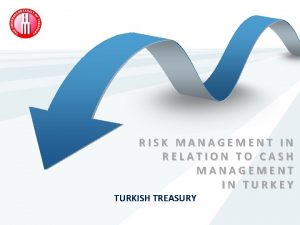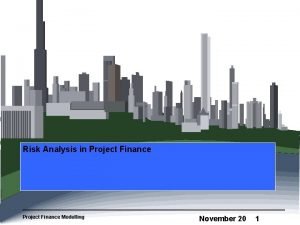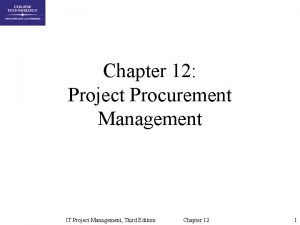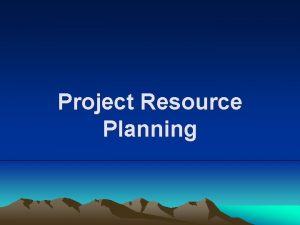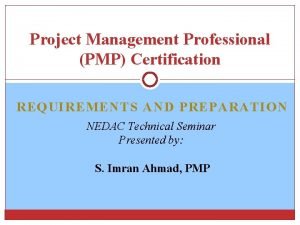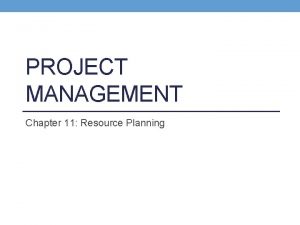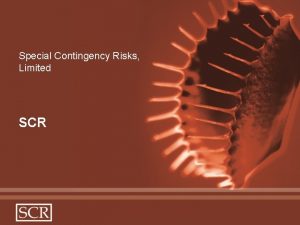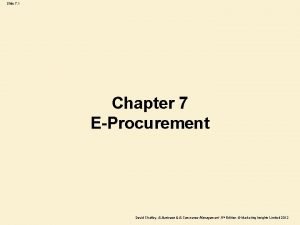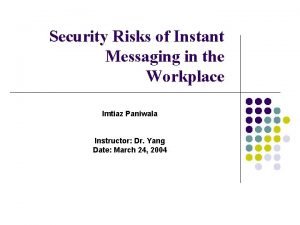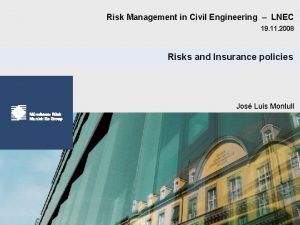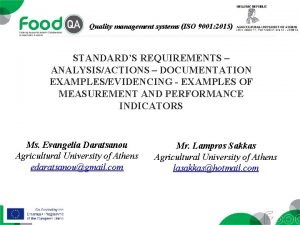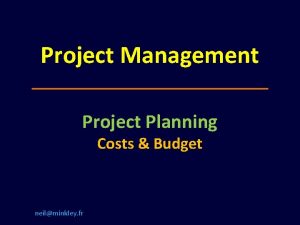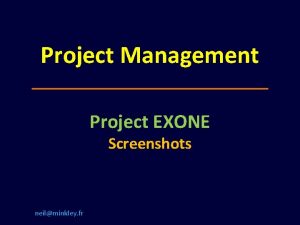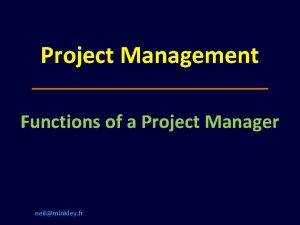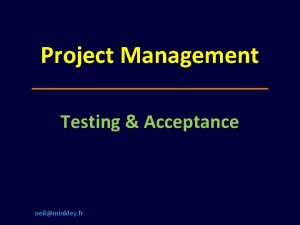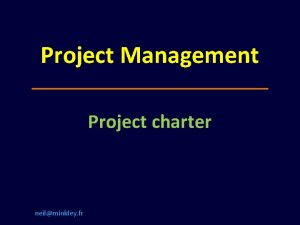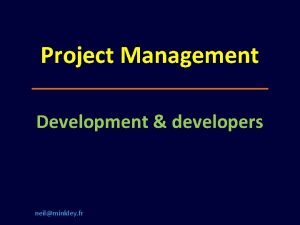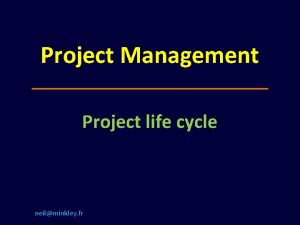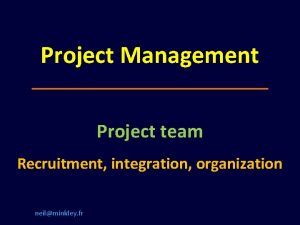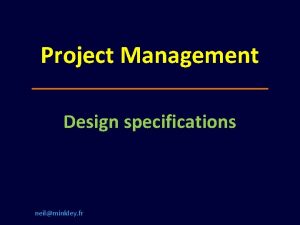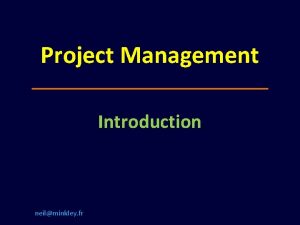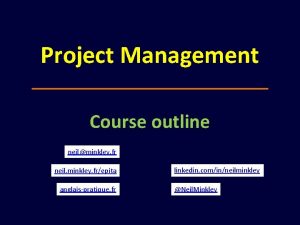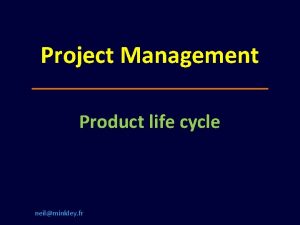Project Management Project Planning Risks neilminkley fr Project
















- Slides: 16

Project Management Project Planning Risks neil@minkley. fr

Project planning processes Define scope & collect requirements Plan procurements Develop human resource plan Plan risk management, identify & analyze risks Plan quality Plan communications Determine budget Estimate costs Create WBS Define tasks Sequence tasks Estimate task resources Estimate task durations Develop schedule

Planning processes: where do we stand? Scope defined & requirements collected Procurements planned Human resource plan developed Plan risk management, identify & analyze risks Quality planned Communications planned Budget determined Costs estimated WBS created Tasks defined Tasks sequenced Task resources estimated Task durations estimated Schedule developed

Risks Ø The possibility of something bad happening at some time in the future Ø Anything that can go wrong will go wrong!

Murphy’s Law From Murphy’s Law: 26 th Anniversary edition by Arthur Bloch

Example of poor risk management

Plan risk management (1) Ø Define how to conduct risk management for the project. Ø Ensure that sufficient time and resources are allocated to risk management. Ø Take into account the relationship with other areas of the project management plan. Ø Identify risks and take action to mitigate or eliminate them.

Plan risk management (2) Ø Methodology Ø Roles and responsibilities Ø Budgeting Ø Timing Ø Risk categories Ø Risk impact levels

Identifying & managing risks Ø Involves: ü expert judgment, ü analysis of historical data, ü teamwork, ü brainstorming workshops, ü a “risk breakdown structure” (RBS).

Risk Breakdown Structure (RBS) Technical External Organization Project Mgmt Requirements Suppliers & Contractors Project dependencies Estimating Technology Client & Customers Resources Planning Complexity & Interfaces Market Funding Controlling Prioritization Communication Performance & Reliability Policies & Regulations Political situation Quality Weather Derived from A Guide to the Project Management Body of Knowledge (“PMBOK® Guide”) published by the Project Management Institute (pmi. org).

Minimizing/eliminating risks (1) Ø Make sure that requirements are comprehensive and unambiguous. Ø Make sure that the WBS and description of tasks in WPs are comprehensive. Ø Clearly identify all of the dependencies between tasks.

Minimizing/eliminating risks (2) Ø Identify critical paths in the project schedule. Ø Include dummy tasks? Task A Dummy task 1 Task B

Evaluating and acting upon risks Ø Probability of materialization Ø Impact on the project Ø Course of action Scope Ø Cost Quality Budget Schedule

Example of risk evaluation

Questions?

Planning completed in all PM areas! Scope (Requirements) Procurement Resources Quality Risks Communications Cost (Budget) Time (Schedule)
 Cash management risk assessment
Cash management risk assessment Project finance risks and mitigants
Project finance risks and mitigants Traditional vs modern project management
Traditional vs modern project management Step wise project planning
Step wise project planning Solicitation planning in project management
Solicitation planning in project management Resource planning definition in project management
Resource planning definition in project management Pmp certification timeline
Pmp certification timeline Role of strategic planning
Role of strategic planning Resource planning definition in project management
Resource planning definition in project management Project planning and management lecture notes ppt
Project planning and management lecture notes ppt The biggest risk is not taking any risk
The biggest risk is not taking any risk Special contingency risks
Special contingency risks Risks of e procurement
Risks of e procurement Risks of e procurement
Risks of e procurement Risks of instant messaging in the workplace
Risks of instant messaging in the workplace Civil engineering risk assessment example
Civil engineering risk assessment example Actions to address risks and opportunities
Actions to address risks and opportunities
